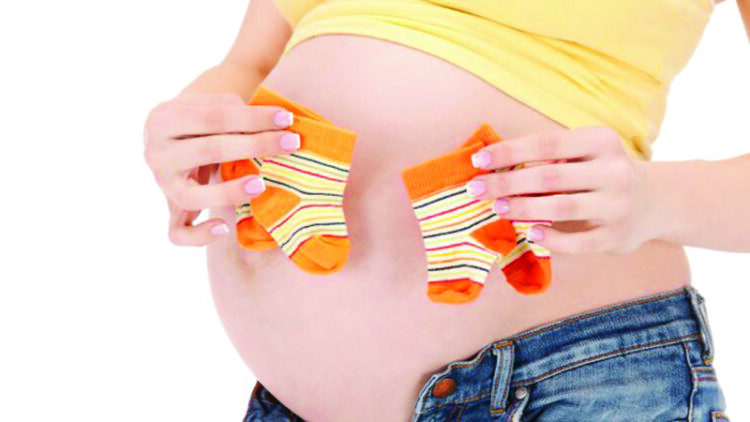Assisted Reproductive Technology (ART) and Artificial Insemination: 5 Answers to Your Questions
What is the process of artificial insemination, an ART technique?
Artificial insemination is recommended when there is a problem with the interaction between cervical mucus and sperm or when the seminal fluid is poor. It is also used in cases of partner impotence, when a donor is needed.
Artificial insemination takes place on a spontaneous cycle, for which specific ultrasound monitoring of ovulation is performed. To perform artificial insemination, it is also possible to use the induction of multiple follicular growth, that is to say, it is possible to stimulate the ovary to produce several oocytes during the same cycle by means of hormonal therapy. In these cases, ultrasound and/or hormonal monitoring are mandatory in order to reduce the risk of multiple pregnancies and severe ovarian hyperstimulation syndrome. Couples with mild male infertility, unexplained infertility or minimal to moderate endometriosis may be offered up to six controlled cycles of intrauterine insemination, as this protocol increases the chances of achieving pregnancy.
Once a sufficiently mature follicle has been identified, insemination is performed. In the case of insemination by stimulation, hormonal treatment is used to increase the production of follicles by the ovaries. The development of the follicles is then monitored until their rupture at the time of ovulation.
The timing of actual insemination is determined after the administration of a dose of chorionic gonadotropin. This hormone has the ability to reproduce what is generally the spontaneous LH surge: the consequence is that ovulation occurs 36 hours after the injection of the Hcg hormone. Some specialists (but not all) prefer to perform double insemination: one after 12 hours and the other 36 hours after taking the Hcg hormone.

A few hours before artificial insemination, the male partner must provide a sample of seminal fluid, which undergoes laboratory processing. This processing is used to select motile sperm.
When the sperm is ready, it is introduced into the uterus via a catheter. This procedure is generally painless, although this varies depending on the woman's sensitivity and the doctor's skill.
After insemination, many gynecologists prescribe a support treatment based on progesterone or Hcg, which facilitates embryo stabilization.
Particularly optimistic estimates place the success rate at around twenty-five percent per attempt. More reliable success rates are estimated between ten and twenty percent per cycle, a factor that varies mainly according to the patient's age.
Artificial insemination should not be performed in cases such as oligospermia or asthenospermia, as it is impossible to obtain a positive result. These problems prevent the minimum amount of motile (and regularly shaped) sperm that can make insemination successful. Artificial insemination is also useless in cases of pelvic factors that lead to infertility, such as tubal problems in general and all those adhesions that act as a barrier between the fallopian tube and the ovary or directly around the ovary itself, making it impossible for the egg to descend from the ovary into the fallopian tube.
EXPRESS QUOTE
Would you like more information?
Your health, our priority.
Request your free quote
ART via artificial insemination with anonymous or known donor: what's the difference?
Artificial insemination can be homologous when performed with the partner's sperm. In cases of male infertility, it is possible to use heterologous artificial insemination, that is, using donor sperm. Artificial insemination is often effective for couples with unexplained infertility, mild or moderate endometriosis in the female partner, slight sperm motility problems, erectile dysfunction.
Artificial insemination with the partner's sperm uses a catheter in the woman's uterine cavity to release her male partner's sperm. This technique can be performed as part of a natural cycle or after mild ovarian stimulation. However, ovulation must be monitored by ultrasound and hormonal tests. Artificial insemination with the partner's sperm (or artificial insemination with conjugal sperm, IUI) is indicated for the treatment of unexplained infertility, in cases of mild male infertility and in cases of ovulation alteration. These are patients for whom ovarian production is not seriously impaired, one or both fallopian tubes are permeable and seminal fluid parameters appear normal or slightly altered.
This technique allows for a pregnancy rate of between 10 and 20% per cycle, depending on the woman's age. It is advisable to perform between 3 and 6 cycles before attempting other assisted reproductive technology (ART) techniques.
Artificial insemination with donor sperm is a procedure that involves depositing seminal fluid, previously obtained from a carefully selected external donor, inside the uterine cavity to increase the density of gametes and promote in vivo fertilization. At the same time, ovulation is programmed to coincide with sperm deposition.
This is a simple and effective technique because the sperm sample used always presents optimal conditions in terms of quality and quantity of sperm, having been previously selected for this purpose. It is recommended when the partner has hereditary genetic diseases or testicular insufficiency for sperm production.
The sperm sample is obtained from a donor who has previously undergone a complete medical examination (semen, blood and urine analysis, general examination, study of sexually transmitted diseases, psychological tests) to guarantee the quality of the sperm and eliminate the possibility of pathologies. All donors are of legal age and sign a declaration of consent and anonymity for their donation. The sample is frozen before being used and kept unused for at least six months (quarantine period), to guarantee the latency period for certain sexually transmitted diseases.